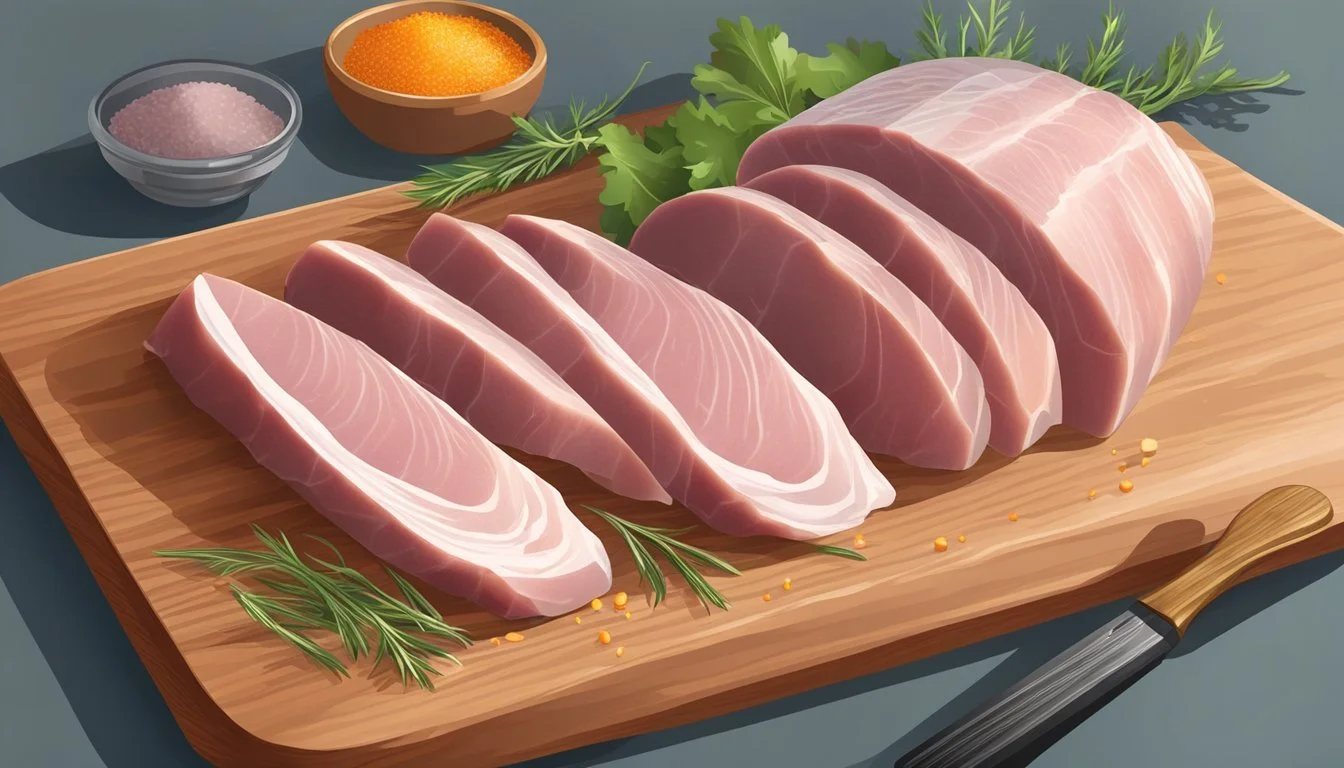Fresh vs. Frozen Corn: Elevating Your Crawfish Boil Experience
Duck breast offers a delicious alternative to traditional poultry options. This versatile cut can be prepared in various ways, from pan-searing to grilling or roasting. Fresh or frozen duck breast can be equally flavorful when prepared properly.
Home cooks and chefs alike appreciate the rich, succulent taste of duck breast. Fresh duck breast provides immediate cooking opportunities, while frozen options offer convenience and longer storage. Both types maintain their quality and can be used interchangeably in most recipes.
When selecting duck breast, consider the cooking method and desired outcome. Fresh breast may be preferable for quick searing, while frozen breast works well for slow-roasting or braising. Regardless of the choice, proper thawing and preparation techniques ensure optimal results, delivering a memorable dining experience.
Understanding Duck Breast
Duck breast offers a unique culinary experience with its rich flavor and versatility. It's important to choose the right type and quality for your cooking needs.
Types of Duck
Muscovy and Pekin ducks are the most common varieties for duck breast. Muscovy duck has leaner, darker meat with a stronger flavor. Pekin duck provides a milder taste with more fat marbling.
Wild duck breeds like mallard tend to have gamier flavors. Hybrid varieties blend traits from different duck breeds.
Some specialty farms raise unique duck breeds prized for their distinct tastes and textures. When selecting duck breast, consider how the breed's characteristics will complement your recipe.
Fresh vs. Frozen Quality
Fresh duck breast typically offers superior texture and flavor compared to frozen. The flesh remains tender with a vibrant red color. Fresh duck allows for easier scoring of the skin to render fat.
Frozen duck breast can still yield excellent results when properly thawed. It's more widely available and convenient to store long-term. Thaw frozen duck gradually in the refrigerator to maintain quality.
Air-drying duck breast in the refrigerator before cooking enhances crispiness and flavor concentration. This technique works for both fresh and thawed frozen duck.
Health Aspects of Duck Meat
Duck breast provides a nutrient-dense red meat option. It's rich in protein, iron, and B vitamins. The skin contains healthy unsaturated fats when rendered properly.
Compared to other poultry, duck breast has a higher fat content. Most fat is located in the skin and can be easily removed if desired.
Duck meat offers potential health benefits like improved heart health and immune function. It's lower in saturated fat than many red meats.
Cooking methods impact the nutritional profile. Grilling or roasting allows excess fat to drain away. Pan-searing with the skin on retains more fat content.
Preparation Essentials
Proper preparation is crucial for achieving delicious duck breast. Key steps include careful defrosting, meat preparation, and selecting complementary ingredients.
Defrosting Frozen Duck Breast
Thaw frozen duck breast in the refrigerator for 24-48 hours. Place it on a plate or in a container to catch any drips. Never defrost at room temperature, as this can promote bacterial growth.
For quicker thawing, submerge the sealed package in cold water. Change the water every 30 minutes. This method takes about 2-3 hours per pound.
Once thawed, pat the duck breast dry with paper towels. This removes excess moisture, helping achieve crispy skin when cooking.
Prepping the Meat
Examine the duck breast for any remaining feathers or quills. Remove these with tweezers if necessary.
Score the skin in a crosshatch pattern, cutting through the fat but not into the meat. This helps render fat and creates crispy skin.
Season the duck breast generously with salt on both sides. Let it sit at room temperature for 30 minutes before cooking. This allows for even cooking and better flavor absorption.
Ingredients to Complement Duck
Salt is essential for enhancing duck's flavor. Use kosher or sea salt for best results.
Citrus fruits like oranges or lemons brighten duck's rich taste. Use their zest or juice in marinades or sauces.
Garlic adds depth to duck dishes. Mince it for rubs or roast whole cloves alongside the duck.
Herbs such as thyme, rosemary, or sage pair well with duck. Use fresh herbs for best flavor.
Consider sweet and tart flavors like cherries or balsamic vinegar to balance duck's richness.
Cooking Techniques
Mastering duck breast preparation involves specific techniques to achieve optimal flavor and texture. Proper searing, utilizing various cooking appliances, and monitoring internal temperature are key to success.
Searing Duck Breast
Searing is crucial for crispy skin and juicy meat. Start with a cold, dry skillet over medium-low heat. Place the duck breast skin-side down. Allow the fat to render slowly for 5-8 minutes.
Increase heat to medium-high. Cook until the skin turns golden brown and crispy, about 3-5 minutes. Flip and sear the other side for 1-2 minutes.
Use a spatula to gently press the breast, ensuring full contact between skin and pan. This promotes even cooking and maximum crispiness.
For larger cuts like goose breast, extend cooking times accordingly.
Using Different Cooking Appliances
While a skillet is traditional, other appliances offer unique benefits. Grilling imparts a smoky flavor and attractive grill marks.
Preheat the grill to medium-high. Score the skin and place breast skin-side down. Grill for 3-4 minutes, then flip and cook to desired doneness.
Oven-finishing after pan-searing ensures even cooking. Sear as usual, then transfer the oven-safe skillet to a preheated 400°F (200°C) oven. Roast for 5-7 minutes for medium-rare.
Sous vide cooking guarantees precise temperature control. Cook sealed breasts at 135°F (57°C) for 90 minutes, then quickly sear for crispy skin.
Achieving the Perfect Internal Temperature
Internal temperature is crucial for food safety and desired doneness. Use a meat thermometer for accuracy.
For medium-rare, aim for 130-135°F (54-57°C). Remove from heat at 128-130°F (53-54°C) as temperature rises during resting.
Rest duck breast for 5-10 minutes before slicing. This allows juices to redistribute, ensuring a moist result.
For well-done, cook to 165°F (74°C), but be aware this may result in drier meat. Adjust cooking times based on breast size and thickness.
Always use a sharp knife and slice against the grain for tender servings.
Serving and Presentation
Proper serving and presentation elevate the duck breast dining experience. Thoughtful plating and complementary sauces enhance the dish's visual appeal and flavor profile.
Plating Your Dish
Slice the duck breast thinly against the grain for optimal tenderness. Arrange the slices in a fan pattern on a warmed plate, showcasing the contrast between the crispy skin and pink meat. Place the duck off-center to create visual interest. Add height with a small stack of vegetables or a garnish. Use negative space to highlight the star of the dish.
Consider texture and color when selecting accompaniments. Bright green vegetables or vibrant fruit compotes provide appealing contrast. A drizzle of sauce around the plate adds elegance without overwhelming the duck.
Pairings and Sauces
Choose sauces that complement the rich flavor of duck without overpowering it. Classic options include:
Orange sauce
Cherry reduction
Plum sauce
Red wine jus
Serve sauces on the side or lightly drizzled over the meat. Pair duck breast with side dishes that balance its richness:
Sautéed spinach
Roasted root vegetables
Wild rice pilaf
Crisp salad with vinaigrette
For a complete experience, consider wine pairings. Pinot Noir and Syrah complement duck's robust flavor. White wine lovers might opt for a Gewürztraminer or Riesling.
Buying Guide
Selecting high-quality duck breast and knowing where to purchase it are crucial for a satisfying culinary experience. Consider these key factors when shopping for duck breast to ensure you get the best product for your needs.
Selecting the Best Duck Breast
Look for plump duck breasts with a thick layer of fat and firm, evenly colored meat. Avoid any with discoloration or unpleasant odors. Fresh duck breasts should have a pinkish-red color and feel cool to the touch.
When buying frozen duck breast, check for ice crystals or freezer burn, which can indicate quality loss. Opt for packages labeled "air-chilled" for better texture and flavor.
Choose duck breasts from reputable sources that prioritize animal welfare. Look for labels indicating "no antibiotics" and "no hormones" for a healthier option. Some brands, like D'Artagnan, are known for sourcing ducks raised in stress-free environments.
Where to Buy Duck Breast
Supermarket chains often stock duck breasts in the frozen meat section or specialty meats area. Look for vacuum-sealed packages to ensure freshness. Some stores may offer fresh duck breasts in their deli section.
Specialty food markets and butcher shops are excellent sources for high-quality duck breasts. These establishments often carry a wider variety of options, including kosher duck breasts.
Online retailers provide convenient access to premium duck breasts. Many offer nationwide shipping, allowing you to purchase from top producers regardless of your location. When ordering online, carefully review product descriptions and customer reviews to ensure quality.
Health and Nutrition
Duck breast is a nutrient-dense protein source. It contains essential vitamins and minerals, including B vitamins, iron, and zinc.
A 75-gram serving of cooked duck meat provides approximately 17.6 grams of protein, meeting about 35% of the daily recommended intake. This makes duck an excellent choice for muscle maintenance and growth.
Duck breast is leaner than many people assume, especially when cooked without the skin. A skinless, broiled duck breast contains only 4.35 grams of fat per serving.
While duck does contain saturated fat, it also offers heart-healthy omega-3 fatty acids. These can contribute to cardiovascular health when consumed as part of a balanced diet.
Duck meat is free from added hormones, as their use is prohibited in poultry production in many countries. Similarly, antibiotics are strictly regulated and only used when medically necessary.
Compared to chicken, duck meat generally has a higher fat content. However, this fat is primarily located in the skin and can be easily removed for a leaner meal.
Duck also contains various antioxidants, which may help protect cells from damage and support overall health.
Culinary Insights
Duck breast offers a rich, flavorful experience for both home cooks and professional chefs. Its versatility and unique taste make it a prized ingredient in many cuisines.
Learning from the Experts
Chefs emphasize the importance of proper technique when cooking duck breast. The key is to start with a cold pan, placing the duck breast skin-side down. This allows the fat to render slowly, resulting in crispy skin. Experts recommend cooking the breast on low to medium-low heat for about 6-8 minutes until the skin turns golden brown.
After rendering the fat, flip the breast and cook for an additional 4-5 minutes. Many chefs suggest aiming for an internal temperature of 128°F to 130°F for medium-rare. Resting the meat for 5-10 minutes after cooking is crucial for optimal juiciness.
Culinary Uses of Duck Breast
Duck breast's rich flavor lends itself to various culinary applications. It pairs well with fruit-based sauces, particularly those featuring cherries or oranges. The rendered duck fat is a valuable by-product, often used to add flavor to roasted potatoes or other vegetables.
Seared duck breast is a popular preparation method, showcasing the crispy skin and tender meat. It can be served as a main dish, sliced thinly atop salads, or incorporated into pasta dishes. Some chefs use duck breast in Asian-inspired recipes, combining it with soy sauce or five-spice powder.
Roasted duck breast is another common preparation, often accompanied by seasonal vegetables. The meat's robust flavor allows it to stand up to bold seasonings and sauces, making it a versatile protein option for creative culinary explorations.








